Brushing
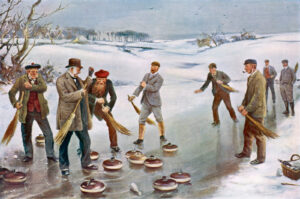
We are getting closer to understanding the physics of curling
Last year, 2024, marked the 100th anniversary of the first scientific article that I’m aware of that investigated the physics behind the sport of curling; a 1924 paper [5] by E. L. Harrington and his colleagues in the College of Engineering of the University of Saskatchewan in Saskatoon. In the 100 years since Harrington’s work, scientists and engineers have investigated various aspects of the sport, but our understanding of one of the sport’s singular fundamentals – why does a curling stone “curl” – remains incomplete, if not vague. There have been dozens of articles, authored by scientists and engineers from Canada, Sweden, Finland, China, Japan, and Korea, that have investigated the question of why stones curl the way they do, frequently contradicting each other’s mathematical models and none of them fully explaining all of a stone’s observed behaviours. At the same time, there are other aspects of the sport, particularly surrounding brushing, that have not been studied extensively and remain
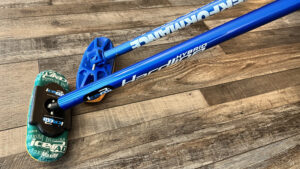
Curling brushes – Try before you buy – Part Quatre
This article is joint work with Dr. John Newhook of Dalhousie University. This past weekend featured Provincial men’s and women’s championships in most of the Canadian provinces, and what was interesting to me was the number of teams who switched to Balance Plus brush heads for their respective territorial championships. As one example, Saskatchewan hosted the combined men’s and women’s provincial championships in Kindersley. All four of the teams in the men’s and women’s CURLSASK finals are regularly Hardline users (if not sponsored by the company). However, during Provincials two of the teams – Steve Laycock on the men’s side, and Nancy Martin on the women’s side – switched to using Balance Plus RS or RS XL brush heads with prismatic Hardline Hybrid handles. This situation was the reverse of a number of instances last season that saw teams (Kaitlyn Lawes in particular) use Balance Plus LiteSpeed handles with an IcePad brush head. While we are some ways away from
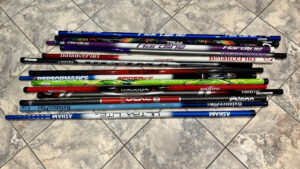
Curling brushes – Try before you buy – Part Trois
This article is joint work with Dr. John Newhook of Dalhousie University. In earlier articles, we documented the mass of commercial brush heads and in addition documented that today’s commercial brush heads distribute pressure across the brush pad in very different ways. In parts 1 and 2 of this article on “Try before you buy”, we argued that brush handle characteristics do matter and, in the second part, presented measurements of various commercial handles with respect to handle diameter. In this, the third part of “Try before you buy”, we present measurements of another important characteristic of brush handles: flex, or more properly their bending moment, or flexural rigidity. As curling equipment manufacturers continue to offer lighter-weight products, athletes may discover that there are significant differences amongst the various commercial offerings of handles in roughly two dimensions: weight and flex, in much the same way that today’s hockey sticks come in a variety of “flex” degrees as do tennis or
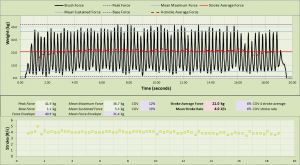
Should I brush faster? Stroke rate, displacement, and vertical force
This article is joint work with Dr. John Newhook, professor and Dean of Engineering at Dalhousie University in Halifax. Over the past year we have been asked numerous times by athletes and coaches alike if they should brush faster – that is, with a higher stroke rate – than what they are doing currently, with the underlying assumption that brushing more quickly will lead to improved brushing performance. A possible reason for these questions is the success of several of the women’s teams from Asia over the past few seasons, who from observation do brush a bit more quickly than their typical Canadian competitors. However, as with many things brushing any answer is dependent on a number of variables and trade-offs, and in no small way is also dependent on the force profile(s) of the particular players. In this article, we’ll take a look at the science in the available literature, coupled with our own experiences, and try to supply
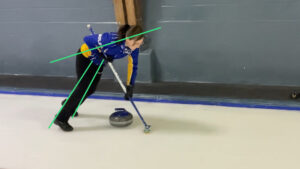
Brushing video analysis with OnForm
While an instrumented brush is ideal for capturing the force profile of an athlete, video analysis is equally essential so that the athlete can get visual feedback on their technique, and know if they have made the correct and desirable adjustments to their technique on subsequent bouts. In this article, I’m going to use Celeste Gauthier, of Team Émilie Lovitt and Toronto Metropolitan University, as a model to describe some useful tips in video analysis of brushing. What is OnForm? OnForm (formerly Hudl Technique) is a coaching application that supports recording and playback of video along with the ability to annotate video with diagramming or audio overlay to provide coach feedback. Videos are stored in the cloud (instead of on your device) and can be shared with athletes (or other coaches) on a coach license. In addition, OnForm now supports multi-camera inputs so one can capture simultaneous video from different camera angles, similar to other apps such as Switcher Studio.
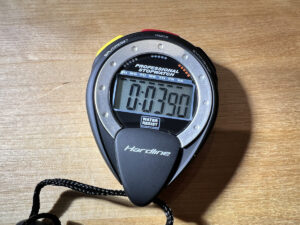
Ten reasons why an interval time might be inaccurate
This article is joint work with John Newhook of Dalhousie University in Halifax. Using interval, or “split” times, can benefit the delivering team because an interval time provides a proxy measurement for the velocity of the stone at release. With an interval time, the two brushers can utilize the time to assist with their weight judgement, and the delivering player can use a split time to assist their delivery with respect to weight control. However, relying on splits – either back-line to near hog line or, less commonly, tee-line to near hog line – can be complicated. One complication is that, to be more effective, the team must map split times into other timing systems, such as hog-to-hog times or hog-to-far tee-line times if they are to utilize the throws of the opposition team to help judge the speed of the ice. But the mapping of split times is by far not the only complication in their use. In this